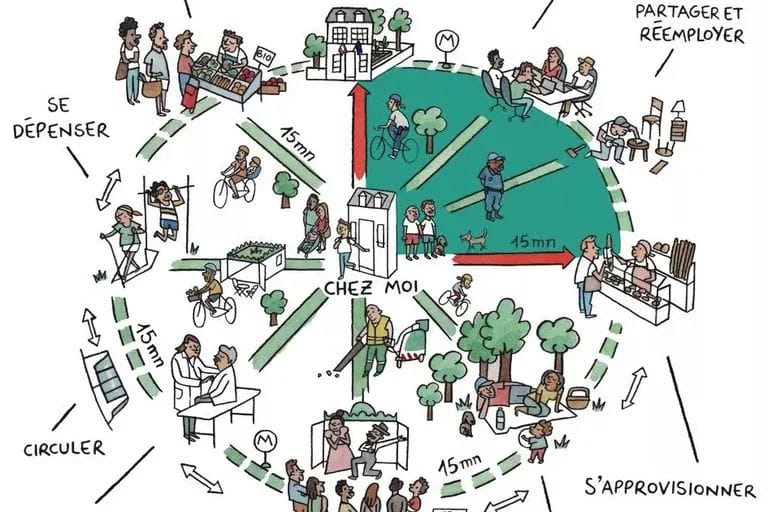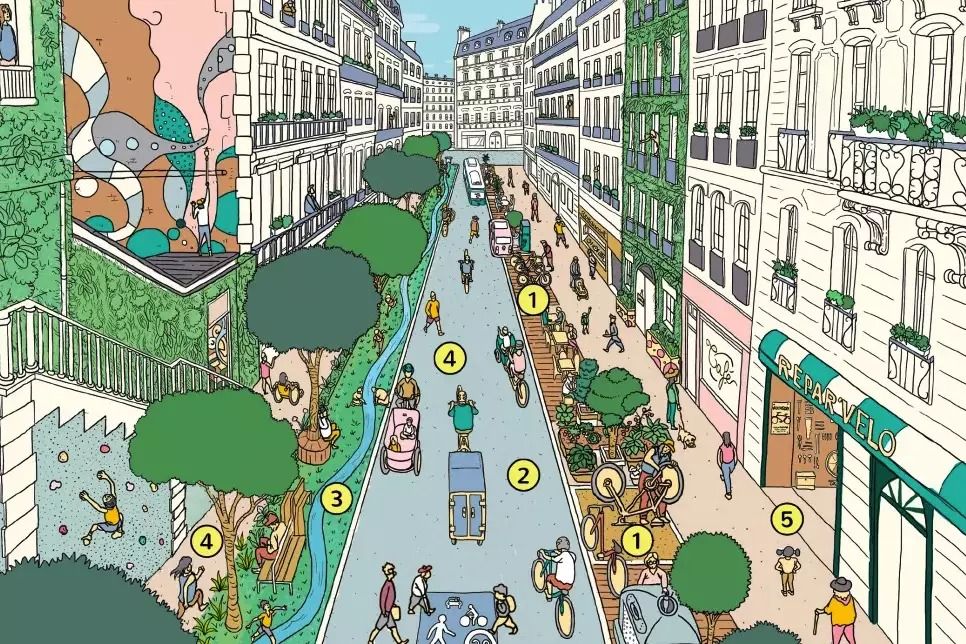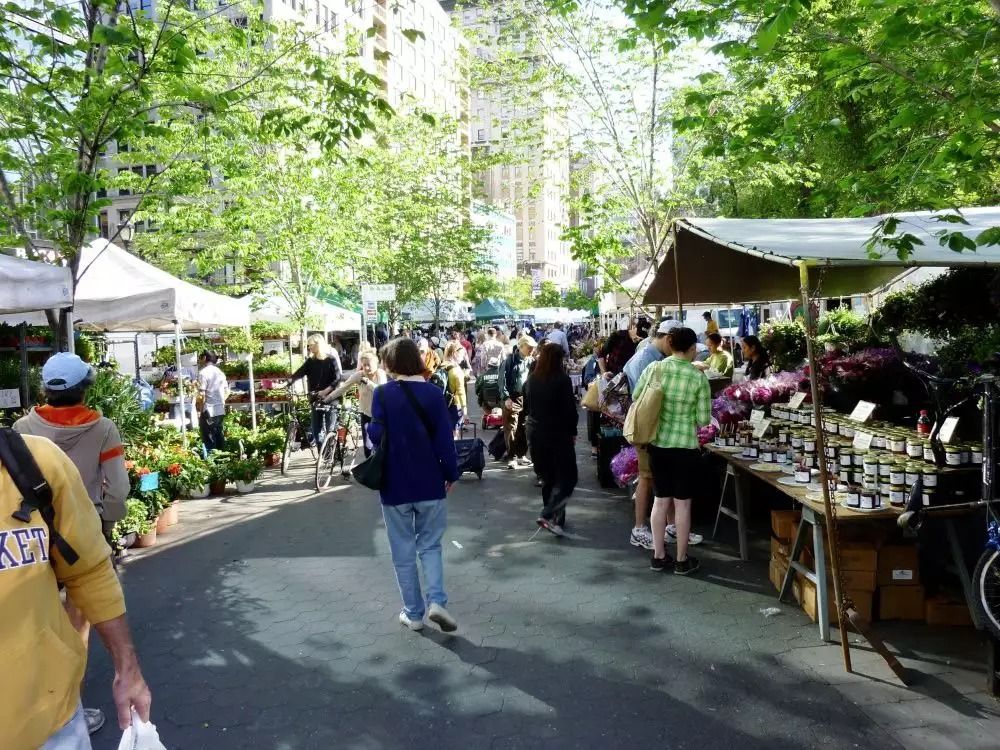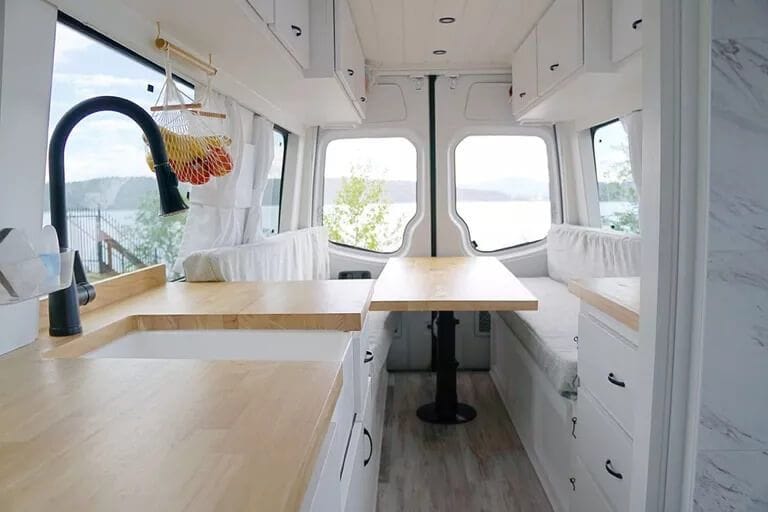The 15-Minute City Is Having a Moment
From Paris to Portland, cities worldwide are embracing the 15-minute city model—prioritizing proximity, walkability, and local living. This urban vision reduces car dependency while fostering healthier, more connected communities.

In an earlier post, The Coronavirus and the Future of Main Street, I argued for the rebirth of our local neighborhoods, noting that even if people are working from home, they still need to get out of the office. I quoted Eric Reguly from the Globe and Mail:
If more people were to work from home, neighborhoods might spring back to life. Imagine a relaunch of Jane Jacobs’s urban ideal, where neighborhoods have a diverse range of work and family functions.
And Sharon Wood of Public Square:
Imagine pop-up offices, meeting pods, and technology centers linked to town squares.... Complementary services will cluster nearby and within easy walking distance, including copying and printing centers, office supply stores, shipping services, attorney/title companies, banking centers, fitness centers, and plenty of restaurants, eateries, and cafes.

This decentralization of services has become known as the 15-minute city, where you can do your job, go to school, see your doctor, and be entertained all within a 15-minute radius of where you live. Popularized in Paris by Mayor Hidalgo, the idea was developed (before the coronavirus) by Professor Carlos Moreno of the Sorbonne. According to Natalie Whittle in the Financial Times:
..the concept of “la ville du quart d’heure” is one in which daily urban necessities are within a 15-minute reach on foot or by bike. Work, home, shops, entertainment, education and healthcare — in Moreno’s vision, these should all be available within the same time a commuter might once have waited on a railway platform.
It's now catching on around the world; it has been picked up by the C40 Mayors as part of their "Green and Just" recovery plan.
We are implementing urban-planning policies to promote the ‘15-minute city’ (or ‘complete neighborhoods’) as a framework for recovery, whereby all city residents are able to meet most of their needs within a short walk or bicycle ride from their homes. The presence of nearby amenities, such as healthcare, schools, parks, food outlets and restaurants, essential retail and offices, as well as the digitalization of some services, will enable this transition. In order to achieve this in our cities, we must create a regulatory environment that encourages inclusive zoning, mixed-use development and flexible buildings and spaces.
In Portland, Oregon, the city's 2015 Climate Action Plan has a Complete Neighborhoods goal, where 90% of residents should be able to access their daily non-work needs by foot or by bike. "As part of this work, Portland has transformed more than 90 miles of busy roads into neighborhood greenways — where street trees shade sidewalks and green swales provide sustainable drainage and traffic calming, and where there are new apartments and street-level businesses."
An Old Idea With a Catchy New Name

There is nothing really new in this idea; the New Urbanists have been talking about it forever, as have heritage activists trying to promote the revitalization of main streets.
But the coronavirus changes the picture and adds new urgency. As Patrick Sisson writes in Citylab, the rebranding and "embrace of the 15-minute city concept may be the most concise and catchy way to repackage the idea as a pandemic economic recovery tool." Sisson quotes the Mayor of Melbourne, Australia, a city with American-style sprawl:
Local leaders are now shifting transportation policy, including adding 40 kilometers of new bike lanes, speeding up plans to put in place more “20-minute neighborhoods,” and shoring up mass transit. “Every city is talking about how to leverage the moment and reposition itself and focus on a sustainable future,” she says. “If we don’t leverage these moments to make material change, we’re crazy.”
She's not alone in thinking that this is a special opportunity.
Or Maybe Not
Others are not so sure about the concept. Back in the Financial Times, Natalie Whittle speaks to Anthony Breach, an analyst at the Centre for Cities, who believes that the 15-minute city “would go against the grain of what we know about city life." He thinks the big cities like London will still have drawing power.
There are special qualities about information exchanged face to face which video calls have not been able to replicate. We can observe that demand in the price that people are willing to pay to live and work in London... Historically, with the invention of the telegraph, phone, internet . . . every time there’s technological progress people predict we will all be able to work in the countryside. But the attractiveness of city centres only increases; the information that can only be exchanged face to face becomes more valuable in relative terms.
This Time it's Different
I am not so sure that Breach is right this time; the shift isn't just technological but it is also biological. I am not even certain that he is right about his history. The telegraph and the phone were part of the Second Industrial Revolution between 1870 and 1914 that actually created the office, gave us a reason to go there, and the transportation technology to get there. Ryan Avent described it in his book The Wealth of Humans:
This was the era in which modern sanitation and indoor plumbing were developed, and in which cities grew to truly modern size, in scale and population. It was the period that gave us what are still today the most advanced personal mobility technologies: the automobile and the airplane. It was this period that made the modern world what it is.
We are now at some point in the middle of the Third Industrial Revolution, the digital revolution, and it could well be that we are going through yet another massive change in the way we work, live, and organize our society. It's just happening much faster, thanks to a big kick in the butt from the coronavirus.








